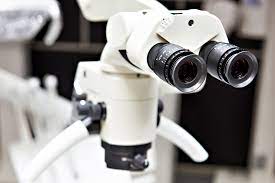Root canal procedures are pivotal in preserving damaged teeth, relieving pain, and maintaining oral health. Success relies not only on the dentist’s expertise but also on advanced tools, with the endodontic handpiece standing out as crucial.
This guide delves into tools vital for successful root canal treatments, ensuring precision and efficiency. From the endodontic explorer, aiding in a meticulous examination, to rotary instruments expediting the procedure, each tool plays a specific role.
The dental operative microscope enhances visualization, while obturation devices contribute to procedural efficiency.
The integration of these tools empowers dentists to navigate complexities, achieve positive patient outcomes, and advance endodontic care.
Endodontic Explorer

A fundamental tool in root canal procedures is the endodontic explorer. This fine-tipped instrument aids in locating and assessing the root canal orifices. By carefully navigating the tooth’s anatomy, dentists can identify hidden canals or unusual configurations that may impact the success of the treatment.
Advantage
The endodontic explorer’s fine tip enables precise navigation, facilitating the identification of hidden canals for thorough root canal treatment success.
Disadvantage
The instrument’s delicate nature poses a risk of breakage, emphasizing the need for careful handling during exploration in root canal procedures.
Dental Loupes

Precision is paramount in root canal treatments, and dental loupes enhance the dentist’s visual acuity during the procedure. These magnification devices provide a clear and enlarged view of the tooth’s interior, allowing for better identification of canals, anatomical variations, and potential obstacles. With improved visibility, dentists can navigate the intricate root canal system with greater accuracy, leading to more successful outcomes and reduced likelihood of complications.
Advantage
Dental loupes enhance precision in root canal treatments by providing a clear, magnified view, facilitating accurate identification of canals, and reducing the risk of complications.
Disadvantage
The potential disadvantage lies in the cost and initial adjustment period required for dentists to adapt to using dental loupes, but the long-term benefits in procedural accuracy often outweigh these challenges.
Apex Locator

An apex locator is a technological advancement that aids in determining the precise length of the tooth’s root canal. Accurate measurement is crucial to ensure the removal of infected tissue and proper placement of filling materials. The apex locator helps prevent over-instrumentation or under-instrumentation, both of which can compromise the success of the root canal procedure.
Advantage
Apex locators provide precise root canal length measurement, ensuring thorough cleaning and accurate filling, contributing to the success of the procedure while minimizing the risk of complications.
Disadvantage
The potential disadvantage lies in the dependence on battery power or electronic components, which may lead to occasional technical issues or the need for maintenance, emphasizing the importance of regular device checks in dental practice.
Rotary Endodontic Instruments

Traditional hand instruments have given way to rotary endodontic instruments, which significantly enhance the efficiency of root canal procedures. These motor-driven tools, such as nickel-titanium rotary files, allow for quicker and more precise shaping of the root canal space. With various tip sizes and configurations, rotary instruments accommodate the diversity of root canal anatomies encountered in different patients. This technological evolution expedites the procedure, reduces chair time, and contributes to the overall success of root canal treatments.
Advantage
Rotary endodontic instruments enhance the efficiency of root canal procedures, offering quicker and more precise shaping, thereby reducing chair time and contributing to overall treatment success.
Disadvantage
The potential disadvantage lies in the initial cost and the need for proper training to ensure dentists effectively utilize these advanced instruments, but the long-term benefits in procedural efficiency typically outweigh these considerations.
Gutta-Percha Obturators

The final step of a root canal procedure involves sealing the cleaned and shaped canal space. Gutta-percha obturators are essential tools for this purpose. These cone-shaped materials, often thermoplastic, are heated and compacted into the canal to create a tight seal. The use of gutta-percha ensures the prevention of bacterial reinfection and promotes the long-term success of the root canal treatment. Adequate obturation is critical to the overall structural integrity and health of the tooth.
Advantage
Gutta-percha obturators facilitate effective sealing of root canals, preventing bacterial reinfection and promoting long-term success by ensuring the structural integrity and health of the tooth.
Disadvantage
The potential disadvantage lies in the technique sensitivity of using gutta-percha, requiring precision during heating and placement, emphasizing the importance of proper training for dentists to achieve optimal results.
Dental Operative Microscope

For intricate and detailed work in root canal procedures, a dental operative microscope is an invaluable tool. This advanced optical instrument provides enhanced visualization of the treatment area, allowing for greater precision and accuracy. The microscope’s magnification and illumination capabilities enable dentists to identify and address minute details, leading to improved outcomes and a higher level of patient satisfaction.
Advantage
The dental operative microscope provides enhanced visualization, enabling greater precision and accuracy in root canal procedures, leading to improved outcomes and increased patient satisfaction.
Disadvantage
The potential disadvantage lies in the initial cost and the need for dentists to adapt to using the microscope, but the long-term benefits in procedural precision and patient satisfaction often outweigh these considerations.
Pulp Tester

Assessing the vitality of the dental pulp is a crucial aspect of root canal procedures. A pulp tester helps determine the presence or absence of pulp vitality, guiding the dentist in making informed decisions about the necessity and scope of the root canal treatment. This tool aids in the diagnostic phase, ensuring that only teeth requiring endodontic intervention undergo the procedure.
Advantage
Pulp testers provide real-time feedback, expediting the diagnostic process and facilitating prompt decision-making in root canal procedures.
Disadvantage
However, reliance on pulp testers alone may overlook subtle signs or complexities, necessitating a comprehensive clinical assessment to avoid potential misdiagnosis or incomplete treatment.
Obturation Devices

Achieving a hermetic seal during the obturation phase is vital for the success of a root canal procedure. Obturation devices, such as heated instruments or carriers, assist in precisely delivering and compacting the gutta-percha into the canal space. These devices ensure a complete fill, eliminating voids and minimizing the risk of microbial penetration.
Advantage
Obturation devices enhance procedural precision, ensuring a thorough and hermetic seal in root canal treatments, and reducing the likelihood of postoperative complications.
Disadvantage
However, the reliance on these devices may pose challenges in certain anatomical variations or complexities, emphasizing the importance of the clinician’s skill and adaptability in achieving optimal obturation outcomes.
Ultrasonic Scalers

In cases where root canal treatment involves the removal of calcified or obstructive materials, ultrasonic scalers are indispensable. These instruments use ultrasonic vibrations to break down and remove hard deposits within the root canal system. By facilitating efficient cleaning and shaping, ultrasonic scalers contribute to the success of the procedure and improve the overall prognosis of the treated tooth. Their precision and effectiveness make them valuable tools in challenging root canal cases.
Advantage
Ultrasonic scalers enhance precision and efficiency, effectively removing calcified obstructions in root canal treatment, thereby improving procedural success and the long-term prognosis of the treated tooth.
Disadvantage
However, the potential generation of heat during prolonged use may pose a risk to surrounding tissues, underscoring the importance of careful technique and monitoring to mitigate the risk of thermal damage.
Sterilization Equipment
Maintaining a sterile environment is crucial in root canal procedures to prevent the introduction of bacteria and reduce the risk of post-operative infections. Autoclaves and other sterilization equipment ensure that instruments, files, and other tools used in the procedure are free from contaminants. Proper sterilization protocols contribute to the overall success of root canal treatments by minimizing the potential for complications and supporting optimal healing.
Step-by-Step Overview of the Root Canal Procedure
This step-by-step overview demonstrates the use of various tools by dentists to perform a root canal procedure effectively and with precision. Each tool plays a specific role in ensuring the success of the treatment and the overall well-being of the patient.
1. Patient Assessment
- Begin by examining the patient’s dental history and conducting a thorough clinical examination.
- Utilize a Pulp Tester to assess the vitality of the tooth and determine if a root canal is necessary.
2. Local Anesthesia
- Administer local anesthesia to ensure the patient’s comfort during the procedure.
- Use an Endodontic Explorer to locate the specific tooth requiring treatment.
3. Tooth Isolation
- Place a rubber dam around the tooth to isolate it and maintain a sterile field.
- Use Dental Loupes for enhanced visibility during the procedure.
4. Access Opening
- Create an access opening in the crown of the tooth using a dental drill and Rotary Endodontic Instruments.
- The Dental Operative Microscope can be employed for magnification and precision during this step.
5. Canal Length Measurement
- Use an Apex Locator to determine the length of the tooth’s root canals accurately.
6. Cleaning and Shaping
- Employ Rotary Endodontic Instruments to clean and shape the root canals, removing pulp and debris.
- Ultrasonic Scalers may be used for the efficient removal of calcifications.
7. Irrigation
- Rinse the canals with irrigating solutions to disinfect and remove any remaining debris.
- The Dental Operative Microscope can aid in visualizing intricate canal anatomy.
8. Obturation (Filling the Canals)
- Use Obturation Devices to fill the cleaned and shaped canals with a biocompatible material, often Gutta-Percha.
- Ensure proper sealing to prevent future infection.
9. Restoration
- Seal the access opening with a temporary or permanent filling material.
- Dental Loupes can assist in the precision required for this step.
10. Post-Treatment Assessment:
- Use the Dental Operative Microscope to assess the quality of the root canal treatment.
- Verify the patient’s comfort and address any concerns.
11. Sterilization
Sterilize all instruments and equipment used during the procedure using appropriate Sterilization Equipment.
12. Post-Operative Care
Provide post-operative care instructions to the patient, including information on pain management and follow-up appointments.
Conclusion
In endodontics, successful root canal procedures hinge on a combination of clinical expertise and the use of advanced tools.
Each tool mentioned plays a specific role in ensuring precision, efficiency, and positive patient outcomes.
From diagnostic instruments to obturation devices, the comprehensive utilization of these tools empowers dentists to navigate the complexities of root canal treatments successfully.
As technology continues to advance, the integration of these essential tools into dental practices will further enhance the quality of care provided in the field of endodontics.






Leave A Comment